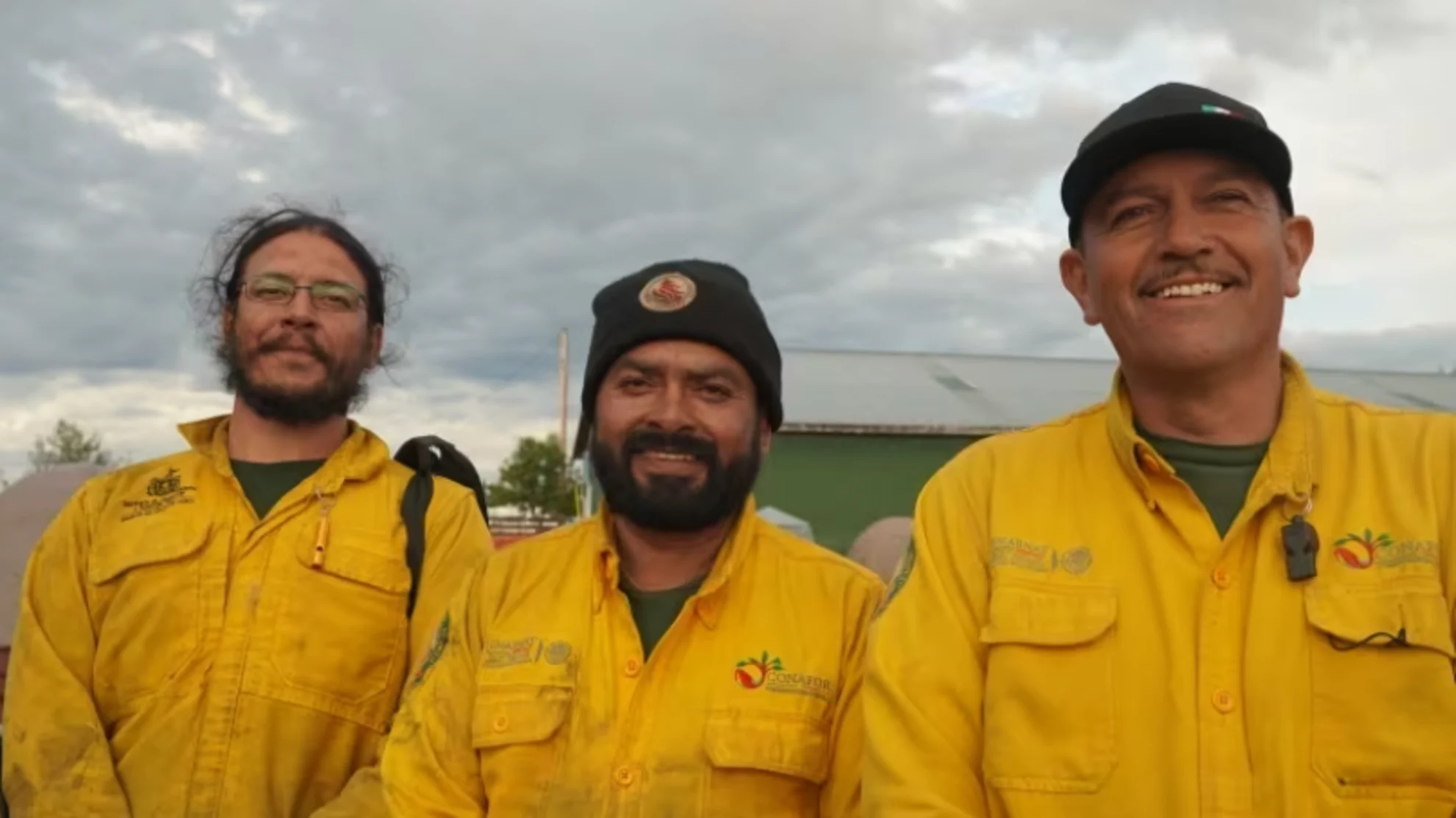
International firefighters bring energy — and expertise — to B.C.'s worst season
Visit The Weather Network's wildfire hub to keep up with the latest on the active wildfire season across Canada.
White trucks fill a parking lot down a dusty road next to the airport in Vanderhoof, B.C.
It's usually a sleepy place with just a few Cessnas flying in and out. But in recent months the parking lot has transformed into a home base for firefighters attached to the Vanderhoof-Fort St. James wildfire complex in Central B.C.
This is where incoming international firefighters meet their beleaguered local counterparts, a welcome relief for those who have been on the front lines for weeks and sometimes months.
RELATED: Osoyoos residents rally to feed hundreds of wildfire fighters protecting town
Out of nearly 250 firefighters deployed to the wildfire complex right now, there are almost 100 international personnel alongside another 75 from the Canadian Armed Forces.
The international teams, mostly from Mexico, the U.S., and Australia, bring an injection of energy and morale, and often a wealth of experience.

B.C. Wildfire Service crews receive a helicopter briefing before flying out to the next site in the Vanderhoof-Fort St. James fire complex. Some of these firefighters have been working long hours for weeks on end. (Tom Popyk/CBC News)
Learning the lay of the land
Back in Australia, Gary Miller is a forester with about 20 years experience fighting fires. In B.C., Miller is the division supervisor for the area south of Vanderhoof.
"Initially, I was very nervous about the role — just being in a foreign country with foreign equipment and not knowing the lay of the land," Miller said. "But I had a really good briefing … and I perform this type of role in Australia."
Miller has enough experience to know that, while the weather has tamped down the aggressive fire behaviour the region was seeing just a week ago, firefighters are not out of the woods yet. The reprieve could be short-lived.
"These things have a habit of biting you when you least expect it, so we're still working hard," he said.

Gary Miller, 45, has 20 years experience fighting fires in Australia and worked alongside Canadians when they were deployed to help during the 2019-2020 fire season in Australia. (Tom Popyk/CBC News)
Miller and his crews are glad for the time to get to know their international counterparts, establish new relationships, and get two feet on the ground before potential crunch time.
For him, the biggest adjustment is the terrain.
"Even in the middle of a drought, there is so much more water here than back home," he said.
"The lakes and wetlands are an issue for firefighting as much as a help. You have to work your way around to get access to the fires"
But Miller says there are more similarities than differences: the long hours, the smoke, the relentlessness of these long-burning fires.

Gary Miller scans the Vanderhoof-Fort St. James fire complex from a helicopter looking for smoking hot spots and updating the wildfire perimeter map. (Tom Popyk/CBC News)
Ricardo Garcia Pacheco leads wildfire response for the state of Durango in Mexico.
Pacheco has been fighting Canadian fires since 2017. He spoke to CBC News with the help of translator and crew member Santiago Corva.
SEE ALSO: Lawn-watering ban starts Friday in Metro Vancouver amid continuing drought
Pacheco says the main difference between the two countries is resource allocation. His work in Mexico relies more on human power than heavy machinery.
"But in the end, the strategy is the same," he said. "The main objective is to retain that fire, and limit spread."

The Finger Lake fire burned through 1,823 hectares, or 18 square kilometers of Saik'uz First Nation territory south of Vanderhoof in Central B.C. (Tom Popyk / CBC News)
Now, his crew of 20 firefighters from across Mexico are ensuring the fires that hit their peak last week are out for good, and not smouldering underground. With a record-setting area burned in this region, it's no small task.
Learning from past experience
At its worst so far this season, there were almost 50 fires fires burning in the Vanderhoof-Fort St James region alone — an exceptional amount for a single incident management team to handle.
But that number is going down as crews bring fires under control.
The Great Beaver Lake fire is the only wildfire of note in the complex now, as the other six were downgraded last Sunday.

Miller says he sees echoes of Australia's worst fire season on record a few years ago, fuelled in part by a years-long drought. Having seen worn-out firefighters on the front lines for months, Miller says the situation in Central B.C. feels familiar.
"It has brought back memories of how tired I was, and wondering when is it all going to end," he said. "It felt like the whole world was going to burn at one point."
He says he's using that experience now to help British Columbians navigate their worst fire season in recorded history.
As crews find their footing, forecasters are watching for changing conditions and expecting another shift toward warmer, more volatile fire conditions in August.
WATCH: Wildfire approaching Osoyoos, B.C, prompts evacuation order
Thumbnail image courtesy of Tom Popyk via CBC.
This article, written by Kate Partridge, was originally published for CBC News.









